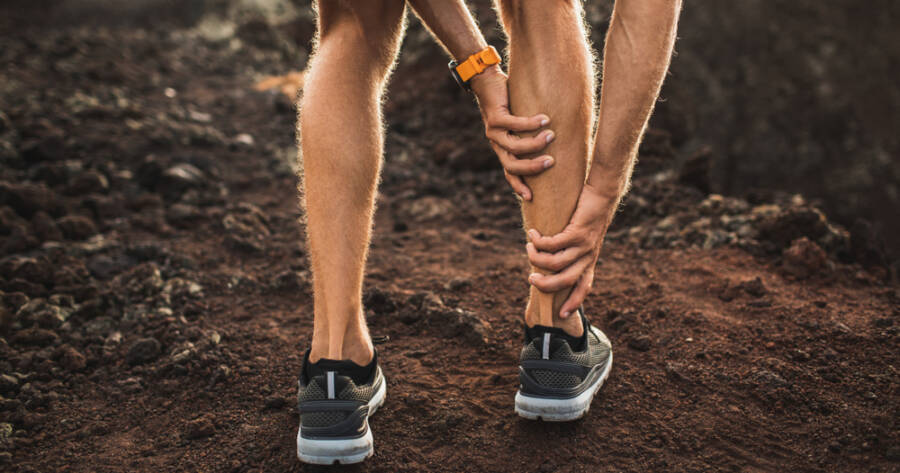Leg cramps can be an uncomfortable and often painful experience. If you’ve ever woken up in the middle of the night with a sharp pain in your calf or experienced sudden cramping after physical activity, you know just how debilitating they can be.
What Causes Leg Cramps?
Leg cramps can have multiple causes, ranging from dehydration to muscle overuse. If you experience frequent cramps, it might be beneficial to understand these potential triggers to help reduce their occurrence.
- Dehydration: If your body is low on fluids, it can lead to an imbalance of electrolytes, which may contribute to muscle cramps. Staying properly hydrated could help prevent these painful episodes. If you notice cramps after sweating heavily or not drinking enough fluids, dehydration might be the cause.
- Mineral Deficiencies: If you lack certain minerals, such as potassium, calcium, or magnesium, you may be at a higher risk of developing leg cramps. These minerals play important roles in muscle function, and an imbalance could cause sudden cramping. Including foods like bananas, leafy greens, and dairy in your diet might help keep these minerals at healthy levels.
- Overuse or Prolonged Activity: If you engage in prolonged physical activity or exercise without proper stretching, you might experience leg cramps as a result of muscle fatigue. This is common among athletes or people who are physically active without sufficient warm-up routines.
- Sedentary Lifestyle or Poor Circulation: If you spend long periods sitting or standing without moving, poor blood circulation might contribute to cramps. If this is the case, incorporating small movement breaks into your day could help reduce the frequency of cramps.
- Certain Medications: If you take medications like diuretics or statins, you might experience leg cramps as a side effect. In such cases, it might be helpful to discuss alternatives with your healthcare provider to minimize discomfort.
How to Avoid Leg Cramps
If you frequently suffer from leg cramps, there are a few preventive steps you could consider that might help reduce their frequency.
- Stay Hydrated: If dehydration is contributing to your leg cramps, drinking enough water throughout the day might help. If you’re engaging in strenuous activities, you could benefit from drinking fluids that contain electrolytes to keep your body balanced.
- Maintain a Balanced Diet: If you suspect that a lack of nutrients is a factor, it could be worthwhile to adjust your diet. Eating foods rich in potassium, calcium, and magnesium might reduce your risk of cramps. Foods like bananas, sweet potatoes, almonds, and leafy greens could help ensure that you are getting the nutrients needed for muscle health.
- Stretch Regularly: If you stretch your leg muscles regularly, especially before and after exercise, you might find that your muscles cramp less often. Stretching helps relax muscle fibers and increases flexibility, which might make your muscles less prone to sudden tightening.
- Stay Active: If you’re leading a sedentary lifestyle, incorporating light exercises into your daily routine might improve circulation, which could help in avoiding leg cramps. Activities like walking, swimming, or cycling could improve blood flow and muscle health, reducing cramp occurrences.
Treatment Options for Leg Cramps
If you do experience a leg cramp, there are several ways you might alleviate the pain quickly.
- Stretching the Affected Muscle: If you feel a cramp starting, gently stretching and massaging the affected muscle might provide immediate relief. For calf cramps, pulling your toes towards you while keeping your leg straight could help alleviate the spasm.
- Heat and Cold Therapy: If the muscle remains tight after cramping, you could use a warm towel or heating pad to relax it. If there’s pain or soreness, applying an ice pack might help reduce inflammation.
- Hydrate: If you experience a cramp, drinking water or a beverage with electrolytes might help alleviate it, especially if dehydration was the cause. Keeping fluids nearby might help you react quickly when a cramp occurs.
- Over-the-Counter Pain Relief: If the cramp leaves lingering pain, over-the-counter pain relievers might help manage the discomfort. However, it’s important to use these medications only as needed and consult with a healthcare professional if you’re unsure.
When to Seek Medical Attention
If you experience frequent or severe leg cramps, it could be wise to consult with your healthcare provider. Persistent cramps might indicate an underlying health issue, such as nerve compression or circulation problems. A doctor could run tests to determine if there’s a specific cause that needs targeted treatment.
If you’re experiencing cramps in conjunction with swelling, redness, or weakness in your legs, it’s possible that these are signs of a more serious condition, and seeking medical help could be crucial. Additionally, if you’re taking medications that might be contributing to the cramps, your doctor might adjust your treatment to alleviate these side effects.
Managing Leg Cramps for Better Comfort
Leg cramps can be both painful and inconvenient, but understanding their causes and learning how to prevent and treat them could make a significant difference. If you take steps to stay hydrated, maintain a balanced diet, and incorporate regular stretching and physical activity, you may find a decrease in the frequency of cramps.
